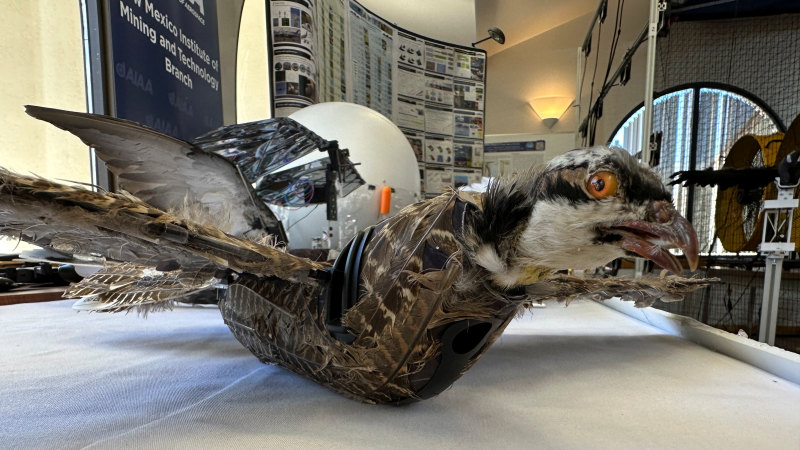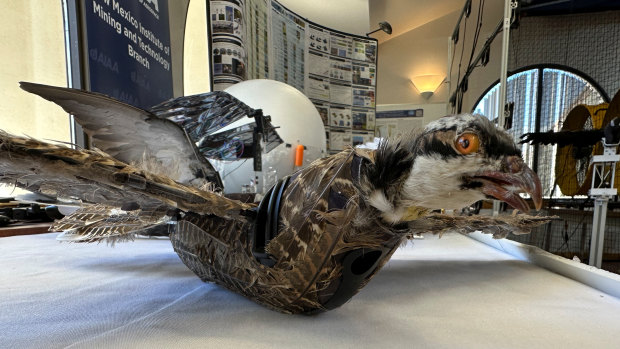Save articles for later
Add articles to your saved list and come back to them any time.
Socorro, New Mexico: Scientists in the US state of New Mexico are giving dead birds a new life with an unconventional approach to wildlife research.
A team at the New Mexico Institute of Mining and Technology in Socorro is taking birds that have been preserved through taxidermy and converting them into drones to study flight.
Dr Mostafa Hassanalian, a mechanical engineering professor who is leading the project, had found that artificial, mechanical birds had not given the results he was looking for.
A taxidermy bird drone developed by researchers at New Mexico Institute of Mining and Technology in Socorro, New Mexico.Credit: Reuters
“We came up with this idea that we can use … dead birds and make them [into] a drone,” he said. “Everything is there … we do reverse engineering.”
Stuffed bird drones – currently being tested in a purpose-built cage at the university – can be used to better understand the formation and flight patterns of flocks. That in turn can be applied to the aviation industry, Hassanalian said.
“If we learn how these birds manage … energy between themselves, we can apply [that] into the future aviation industry to save more energy and save more fuel.”
Brenden Herkenhoff, a PhD student at the university, focuses his research on coloration and flight efficiency.
While most people think of a bird’s colour as a way to attract mates or use camouflage, Herkenhoff is studying how colour affects flight efficiency.
“We’ve done experiments and determined that for our fixed-wing aircraft, applying certain colour can change the flight efficiency. And the same is true for birds, we believe,” he said.
The current taxidermy bird prototype flies for a maximum of only 20 minutes, so the next stage is to figure out how to make it fly longer and conduct tests in the wild among living birds, Hassanalian said.
Reuters
Most Viewed in World
From our partners
Source: Read Full Article

